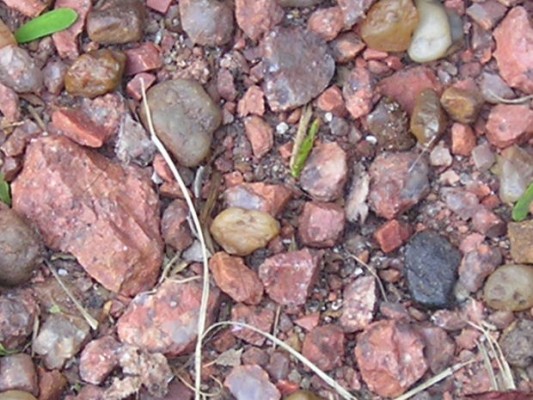My husband and I once stopped at an overlook on The Blue Ridge Parkway. It was Fall, so the mountains beyond us were blazing with color; every shade of red, orange, and yellow. To the side of the overlook, we noticed a little-worn path that led into the woods below. We took it.
Step by step we went down into an odd, emerald-colored shade, almost as if we had descended into a different season. There, we found a stream running between fat tree trunks and meandering down and around small rises in the earth. For a time, we sat in silence on a large rock beside the stream, listening to the trickling sounds and the quiet rustle of a breeze.
At the time, one of my grandsons was a lover of rocks, the more unique, the better for him. So I began to look for some.
All around were smaller rocks that had obviously come from a ragged indent in one side of the large rock on which we were sitting. Perhaps time had made the indentation, or maybe another boulder had fallen upon it. But one thing was certain, the smaller rocks surrounding it had the fiery color of the large rock’s interior, and if any one of them were tested, it would have the same interior composition of elements, too.
Individually though, the parts of the big rock were very different in appearance. Some had ended up in the stream and were round and smooth. Others were angular and roughly formed through weathering and erosion. Yet each was born from the same large rock.
Our human lives are like those rocks. We all come from the same origin. Many of us may have personally broken away from that entity, or we may have been severed from it by happenstance.
Nevertheless, despite our differing appearances through facial features, skin color, or personality traits, we possess the characteristics of our origin. We come from a ‘whole,’ and we all are related to it. This is the fact that makes us brothers and sisters.
Of course, the ‘whole’ I’m speaking of is God, our Creator. The amazing thing is that although we are no longer physically attached to God, as the smaller rocks are no longer physically attached to their origin, we still carry His likeness within us.
Many today refuse to accept that we carry God within us, or that God exists at all. But if you’ve ever truly loved anyone, how do you come to that refusal? Love is not a physical attachment, not really. Love is something that can’t be touched or seen except through a person’s actions. Our love in action, the way we relate to our brothers and sisters, is the unifying characteristic that likens us to God, and it is the characteristic that distinguishes a human being from the rest of creation.
Reconsider the rocks: the whole and its parts. It is the law of physical nature that the broken pieces of rock will never again be ‘one’ with the boulder they came from. Their natural destiny is to remain divided from it. But human beings have a supernatural destiny. All religions believe that someday we will individually re-unite with God. We will return to the whole.
In the words of Mother Theresa of Calcutta, “I am not sure exactly what heaven will be like, but I know that when we die and it comes time for God to judge us, he will not ask, ‘How many good things have you done in your life?’ rather he will ask, ‘How much love did you put into what you did?’”
In other words, God will ask: How much of Me did you show to the world?
Copyright 2014, Kaye Hinckley
About the Author

Guest
We welcome guest contributors who graciously volunteer their writing for our readers. Please support our guest writers by visiting their sites, purchasing their work, and leaving comments to thank them for sharing their gifts here on CatholicMom.com. To inquire about serving as a guest contributor, contact editor@CatholicMom.com.



.png?width=1806&height=731&name=CatholicMom_hcfm_logo1_pos_871c_2728c%20(002).png)
Comments